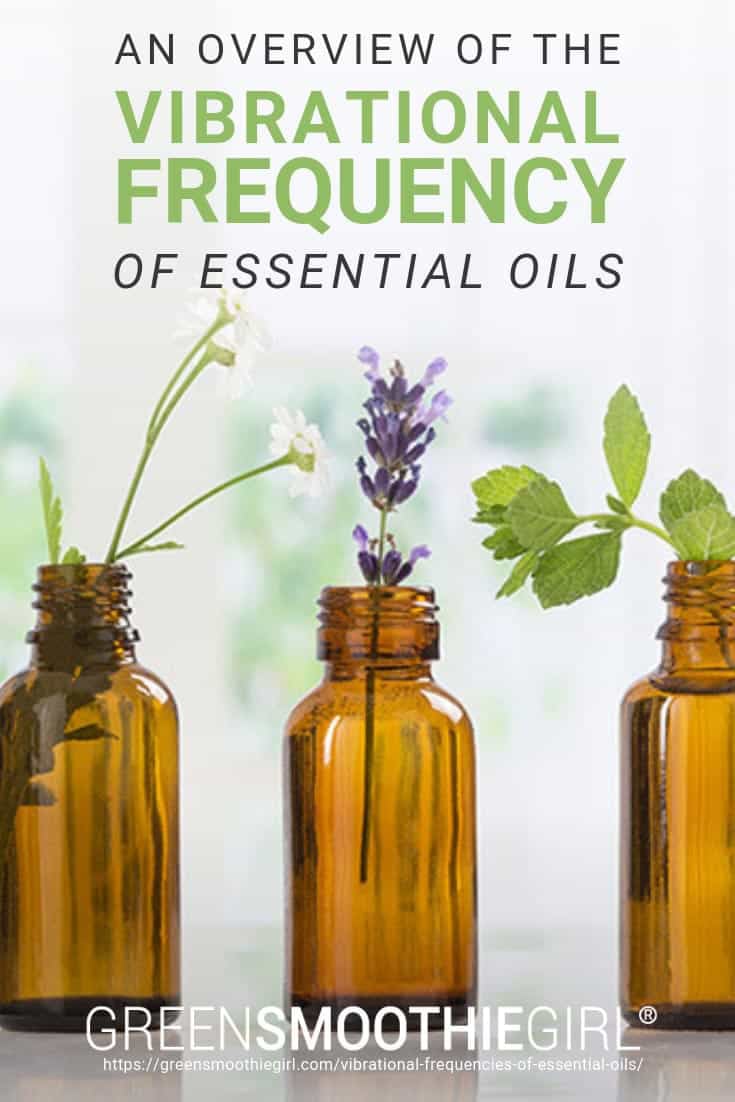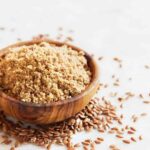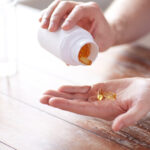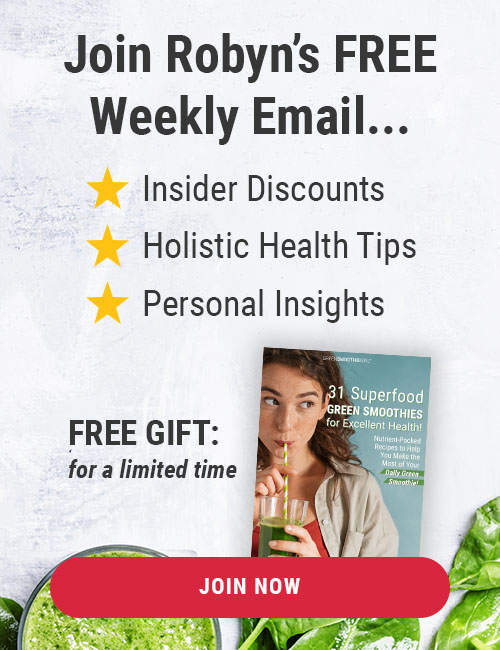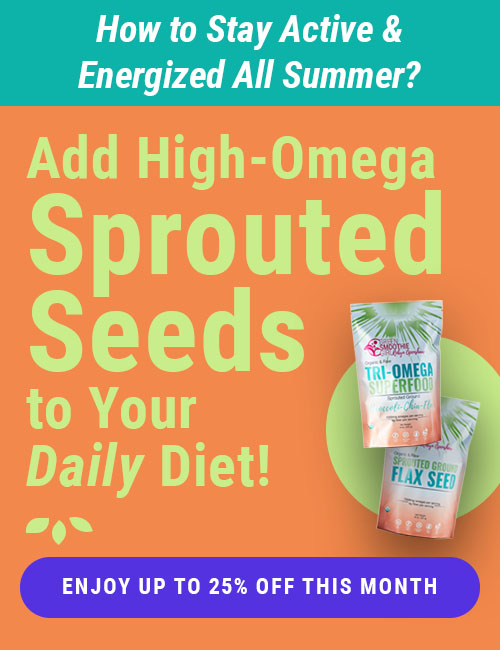An Overview of the Vibrational Frequency of Essential Oils
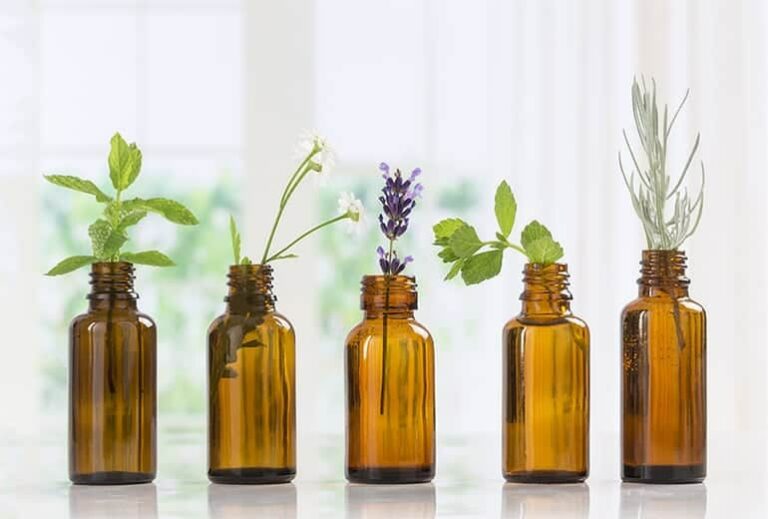
If you’ve spent much time reading this blog, or listening to my podcast, Vibe, you know that everything I do ties back to the following quote by Nikola Tesla: “If you want to find the secrets of the universe, think in terms of energy, frequency, and vibration.”
In this post:
- A Crash Course in Vibrational Frequencies
- Can Essential Oils Raise Our Vibrational Frequency?
- Using Essential Oils as Medicine
- An Important Caveat About Essential Oils
- Evaluating the Quality of Essential Oils
- Essential Oils with the Highest Vibrational Frequency
- The Rise of Essential Oils
- Using Essential Oils Safely and Effectively
- TLDR: The Vibrational Frequencies of Essential Oils
Many people are surprised to learn that everything has a vibrational frequency,1 including our bodies and the food we eat. Which brings us to one of the secrets of the universe: Not only do our bodies have a measurable frequency, but it’s actually possible to raise that frequency for better health.
What does all this have to do with essential oils? Well, for one thing, essential oils have the highest vibrational frequencies of any natural substance. Sound woo woo? Let’s dig in.
A Crash Course in Vibrational Frequencies
I get it. Any conversation about energy, vibrations, and frequencies is bound to trigger people’s skepticism.
So, let’s break it down. First of all, vibrational frequencies1 aren’t an idea that somebody cooked up to sell books. We use vibrational frequencies as diagnostic tools in modern medicine all the time, with EEGs and EKGs, which measure brain waves.
The composite vibrational frequency of an object can be measured in several ways, depending on what you’re measuring.
Measuring Vibrational Frequencies in Human Beings
In human beings, vibrational frequency can be measured with a biofeedback machine that detects brain waves, tension in the muscles and ligaments, and skin temperature, among other things, and gives a reading in megahertz (MHz).
If you’re sick or unwell, your vibrational frequency1 will be lower. If you’re healthy and well, your vibrational frequency will be higher. The average healthy human being clocks in anywhere from 62 MHz-70 MHz.2 When you’ve got a cold, you’ll dip down to around 58 MHz. People close to death usually come in around 25 MHz.
[Related: Quiz: Are You An Intuitive, Empath, Healer, Or Highly Sensitive Person? Find Out In 60 Seconds!]
Measuring Vibrational Frequencies of Food and Plants
One of the first people to recognize and measure the vibrational frequencies of plants was Bruce Tainio, who created a device called a BT3 Frequency Monitoring System.2 This sensitive machine could detect and measure the average bioelectrical frequency of plants and other foods, assigning each a value in megahertz (MHz). Processed foods and meats clocked in at about 0-7 MHz, while green foods and fruits come in at 15-70 MHz.3 Cold-pressed, organic juices (which, like essential oils, are concentrated!) come in even higher!
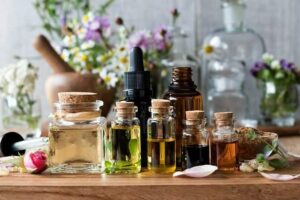
Everything has a vibrational frequency, including essential oils.
Gary Young, founder of Young Living and widely considered the father of the modern essential oils movement, used Tainio’s technology to measure the vibrational frequency of essential oils. The results, which showed that essential oils have the highest vibrational frequencies of any natural substance (between 42-580 MHz2), changed the way many people saw essential oils (more on that later), and offered some insight into the science behind a mountain of anecdotal evidence.
[Related: The Law Of Attraction Made Practical]
Can Essential Oils Raise Our Vibrational Frequency?
What happens when you add hot water to cold water? The temperature of the cold water increases. Similarly, our vibrational frequency can shift (up or down) depending on the vibrational frequency of the foods we consume, the amount of stress in our lives, the air we breathe, and the relationships we’re part of.
Because essential oils are measured as the highest frequency of any natural substance, they have the greatest potential to increase our ViQ (vibrational quotient). It’s one of the biggest reason essential oils extracted from petals, stems, and plant roots have gained popularity as alternative medical treatments and tools for general wellness (more on medicinal uses up next!).
Using Essential Oils as Medicine
The high vibrational frequency of essential oils means that many are natural anti-inflammatory compounds, anti-bacterial agents, and even cell-selective cytotoxic compounds that kill cancer cells but not healthy cells.
In Western medicine, we’ve strayed pretty far from the idea that plants and herbs should be our first line of medicine. Not by coincidence, this shift in thinking coincided with the discovery that chemically altering a plant substance into a proprietary substance can net you a billion dollars. Unfortunately, these synthetic drugs are hyper-processed (and subsequently low-vibration) substances that your body has a difficult time using very effectively. That’s a big reason why many medicines build up in your organs and tissues, leading to eventual damage and health complications.
So, what’s the solution? As the father of modern medicine, Hippocrates, said, “Let food be thy medicine, and medicine thy food.” We’re just scratching the surface on the medicinal potential of essential oils, but numerous studies show that these high-vibe substances have medicinal value.4
Antibacterial and Disinfectant
One study tested different types of essential oils against different strains of E-coli,4 finding that several had “moderate to strong” antimicrobial properties. Another study showed that several different types of essential oils are effective against the antibiotic-resistant pathogen Burkholderia cepacia complex6 (which commonly causes infections in people with a compromised immune system).
Anxiety, Insomnia, and Nausea
A study that followed patients undergoing surgery showed that essential oils made a significant different in improving anxiety, nausea, and insomnia.7 These symptoms, commonly triggered by stress and anxiety, were shown to be improved with peppermint, orange, and lavender essential oils. Lavender in particular has been well documented in easing anxiety.8
Pain Relief
Aromatherapy with essential oils can help improve pain — without the side effects of many western remedies. While more research is needed, several studies have found that patients are better able to manage pain with essential oils,9 at a fraction of the cost of other pain management treatments.
Antifungal that Inhibits Candida Growth
A study that tested how well eugenol (the active ingredient in clove oil) could combat candida (yeast) taken from patients’ mouths10 showed dramatic results in limiting the growth of candida cells and blocking their spread across various surfaces. This study has huge implications for many different health conditions that are caused by candida overgrowth!
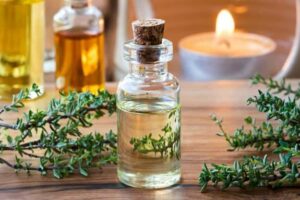
Essential oils have been used medicinally for centuries.
Anti-Inflammatory
Many studies show that essential oils have anti-inflammatory properties.11 When a group of mice were given an oral dose of 100 mg of lemon or orange essential oils, then exposed to formalin (a skin irritant), the skin on their paws was significantly less irritated than the group of mice that did not receive the essential oils.
Helps Protect Organs and the Endocrine System
A recent study showed that thyme essential oil was effective in improving the markers of liver health12 in mice whose livers had been damaged from large doses of acetaminophen. Essential oils like thyme, which has natural antioxidant properties,13 seek out, stabilize, and flush unstable molecules that result from pollution or chemicals in the body. This antioxidant scavenging can make all the difference in how much harm pollutants or chemicals can wreak on the organs and endocrine system.
Neurological Health
Studies show that essential oils have a great deal of potential to protect the brain and nervous system.14 Depression, anxiety, and even Alzheimer’s and dementia have been shown to respond favorably to essential oils. Not to mention more general benefits in terms of cognition, memory, and learning!
Anticancer Properties
Essential oils can help prevent and fight cancer cells.15 Many essential oils have unique molecule structures that disarm cancerous cells, incredibly high antioxidant value, as well as the potential to help relieve nausea, anxiety, and depression in cancer patients. While clinical trials are ongoing, and essential oils should be considered a supplement to other treatments, their potential is promising and worth mentioning!
That’s just the short list of studies that show conclusive evidence of the value essential oils have to offer when it comes to medicine. Most of these studies call for additional research and new studies to learn about essential oils, since we’re only scratching the surface when it comes to the potential of these powerful substances.
An Important Caveat About Essential Oils
Like anything (including a raw, whole foods diet), essential oils aren’t magic. One dose of rose oil (after a lifetime of eating processed, carcinogenic food) won’t obliterate a tumor, just like one salad won’t lower your cholesterol.
Many among us, in the age of quick fixes, are eager for something that requires no effort on our part. So, while essential oils can be INCREDIBLY beneficial because of their high vibrational frequency and other unique medicinal qualities (more on that next), I hope you don’t see them as the new “pill for every ill.” Instead, I hope you see essential oils as one powerful tool as part of a healthy lifestyle that can help improve your overall wellness, replace some of the less effective Westernized medical treatments you might be using, and raise your ViQ.
Evaluating the Quality of Essential Oils
The vibrational frequency of an essential oil depends in part on what kind it is (more on the essential oils with the highest frequency next), and in part on its quality.
Poor quality essential oils might smell nice, but they won’t pack any of the medicinal or vibrational punch of pure essential oils. High-quality oils share all of the following characteristics:
- Extracted from sustainably farmed, organic crops
- Free from additives or synthetic substances
- Distilled directly from the root, leaf, flower, or rind of the plant or herb
- Come in a dark glass container (to avoid degradation from UV light or plastic)
- Aren’t cheap. To produce just one ounce of rose oil, it takes about 250 pounds of roses! Be wary of cheap essential oils.
Many essential oil brands claim to be “pure” when, in fact, independent labs show they have many synthetic chemicals in them. Those who sell them often simply repeat the marketing information given to them by the manufacturer. In other words, do your research on a company’s sourcing! And insist on a certified organic label. Anything less is just marketing!
Essential Oils with the Highest Vibrational Frequency
While all essential oils vibrate at an exceptionally high frequency, ranging from 50 MHz to more than 500 MHz, it can be helpful to know the specific frequencies of different common essential oils, as measured by Gary Young.2
You may want to consider having these essential oils on hand to use as flavoring in your food (with high-vibe plants as your primary food sources!), to apply topically to skin (keep in mind that some may need to be diluted), or to use in a diffuser as aromatherapy to improve your grounding and a higher vibrational frequency.
The Rise of Essential Oils
The modern essential oils industry is expected to be valued at 27.5 billion by 2022.16 America’s honeymoon with pharmaceutical companies is over. Too many of us have been fed false hope and miracle pills with poor results and heartbreaking side effects. And too often, we've watched these drugs claim the lives of people who are close to us. We all want something better.
Essential oils have enormous potential to be that “better” — with the caveat I talked about earlier. Essential oils aren’t magic bullets that will work without a holistic approach to health and a diet of mostly raw, whole foods. Sometimes I worry that we’re collectively moving from a belief that a synthetic drug will solve our every problem to a slightly revised belief that a bottle of oil will solve our every problem.
We would all do well to remember that as essential oils continue to rise in popularity, the market will demand both higher quality standards--but also plenty of knockoffs that are good for flavorings or perfume but do not have a therapeutic effect. Remember to do your research and check your chosen brand’s labels and sourcing!
Using Essential Oils Safely and Effectively
Like any medicinal tool, you shouldn’t just run out and buy a bottle of thyme oil and start dabbing it everywhere. Essential oils should be used with purpose, as directed by experts who don’t have a vested interest in selling you their product.
Dr. Eric Zielinski is the source I trust most for education on how to use essential oils safely and effectively. Dr. Zielinksi a researcher and author of The Healing Power of Essential Oils: Soothe Inflammation, Boost Mood, Prevent Autoimmunity, and Feel Great in Every Way.17
“Dr. Z” is brand-neutral and does not sell essential oils. His information is evidence-based, to help you find great ways to use your oils, treat symptoms, replace toxic personal care products and home cleaning products, flavor your food, and so much more.
[Related: Vibe Ep.67: Essential Oils for Abundant Living with Dr. Eric Zielinski]
TLDR: The Vibrational Frequencies of Essential Oils
Everything has a measurable vibrational frequency--from the desk you’re sitting at, to the food you just ate for lunch, to your body. Processed foods and meat have some of the lowest frequencies of all foods, while fruits and vegetables have some of the highest. The substances with the highest vibration on earth, however, come in the form of concentrated, organic essential oils.
By thoughtfully incorporating essential oils into your life through aromatherapy, topical use, and consumption it’s possible to increase your own vibrational quotient (ViQ), and improve your overall health. While some people have scoffed that essential oils are “woo woo” medicine, numerous scientific studies show that these incredible high-vibe substances can indeed improve our health through their antioxidant, disinfectant, anti-inflammatory, and even anti-cancer properties.

Disclosure: This post may contain affiliate links that help support the GSG mission without costing you extra. I recommend only companies and products that I use myself.
Resources
- Young, Gary. “Human Electrical Frequencies and Fields.” Uploaded by the Nikola Tesla Institute, Scribd. Accessed May 30, 2019.
- Bio-Spiritual Energy Healing, “Vibrational Frequency and the Subtle Energy Nature of Essential Oils,” Accessed May 29, 2019.
- Morse, Robert (N.D.), 2004. The Detox Miracle Source Book – Raw Foods and Herbs for Complete Cellular Regeneration. Kalindi Press, pp. 372.
- Elshafie HS, Camele I. An Overview of the Biological Effects of Some Mediterranean Essential Oils on Human Health. Biomed Res Int. 2017;2017:9268468. doi:10.1155/2017/9268468
- Duarte M. C. T., Leme E. E., Delarmelina C., Soares A. A., Figueira G. M., Sartoratto A. (2007). Activity of essential oils from Brazilian medicinal plants on Escherichia coli. J. Ethnopharmacol.111 197–201
- Maida, I. et al. Exploring the anti-Burkholderia cepacia complex activity of essential oils: a preliminary analysis. Evid. Based Complement. Altern. Med. vol. 2014, pp. 10 (2014).
- Stea S, Beraudi A, De Pasquale D. Essential oils for complementary treatment of surgical patients: state of the art. Evid Based Complement Alternat Med. 2014;2014:726341. doi:10.1155/2014/726341
- Malcolm BJ, Tallian K. Essential oil of lavender in anxiety disorders: Ready for prime time?. Ment Health Clin. 2018;7(4):147–155. Published 2018 Mar 26. doi:10.9740/mhc.2017.07.147
- Lakhan SE, Sheafer H, Tepper D. The Effectiveness of Aromatherapy in Reducing Pain: A Systematic Review and Meta-Analysis. Pain Res Treat. 2016;2016:8158693. doi:10.1155/2016/8158693
- de Paula SB, Bartelli TF, Di Raimo V, Santos JP, Morey AT, Bosini MA, et al. Effect of eugenol on cell surface hydrophobicity, adhesion, and biofilm of Candida tropicalis and Candida dubliniensis isolated from oral cavity of HIV-infected patients. Evid Based Complement Alternat Med. 2014;2014:505204.
- Amorim JL, Simas DL, Pinheiro MM, et al. Anti-Inflammatory Properties and Chemical Characterization of the Essential Oils of Four Citrus Species. PLoS One. 2016;11(4):e0153643. Published 2016 Apr 18. doi:10.1371/journal.pone.0153643
- Firenzuoli F, Jaitak V, Horvath G, Bassolé IH, Setzer WN, Gori L. Essential oils: new perspectives in human health and wellness. Evid Based Complement Alternat Med. 2014;2014:467363. doi:10.1155/2014/467363
- Zaborowska Z., Przygoński K., Bilska A. Antioxidative effect of thyme (Thymus vulgaris) in sunflower oil. Acta Sci Pol Technol Aliment. 2012;11:283–291.
- Ayaz M, Sadiq A, Junaid M, Ullah F, Subhan F, Ahmed J. Neuroprotective and Anti-Aging Potentials of Essential Oils from Aromatic and Medicinal Plants. Front Aging Neurosci. 2017;9:168. Published 2017 May 30. doi:10.3389/fnagi.2017.00168
- Gautam N, Mantha AK, Mittal S. Essential oils and their constituents as anticancer agents: a mechanistic view. Biomed Res Int. 2014;2014:154106. doi:10.1155/2014/154106
- PR Newswire, Press Release, “Essential Oil Market to Attain a Value of US$27.49 Bn By 2022,” Published Nov. 27, 2018.
- Zielinski, Eric, The Healing Power of Essential Oils: Soothe Inflammation, Boost Mood, Prevent Autoimmunity, and Feel Great in Every Way. Harmony, March 2018.
Posted in: High-Vibe Living, Natural Remedies





